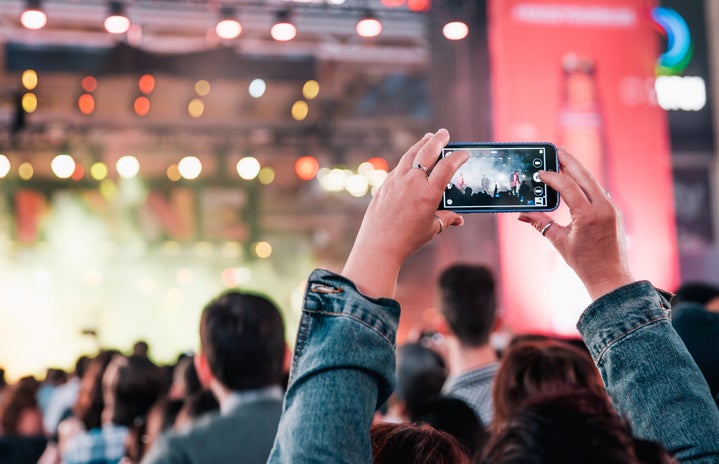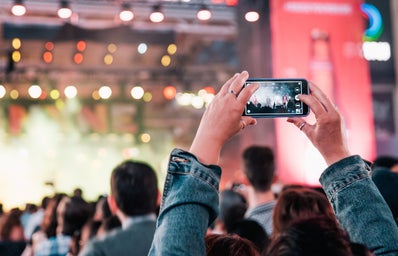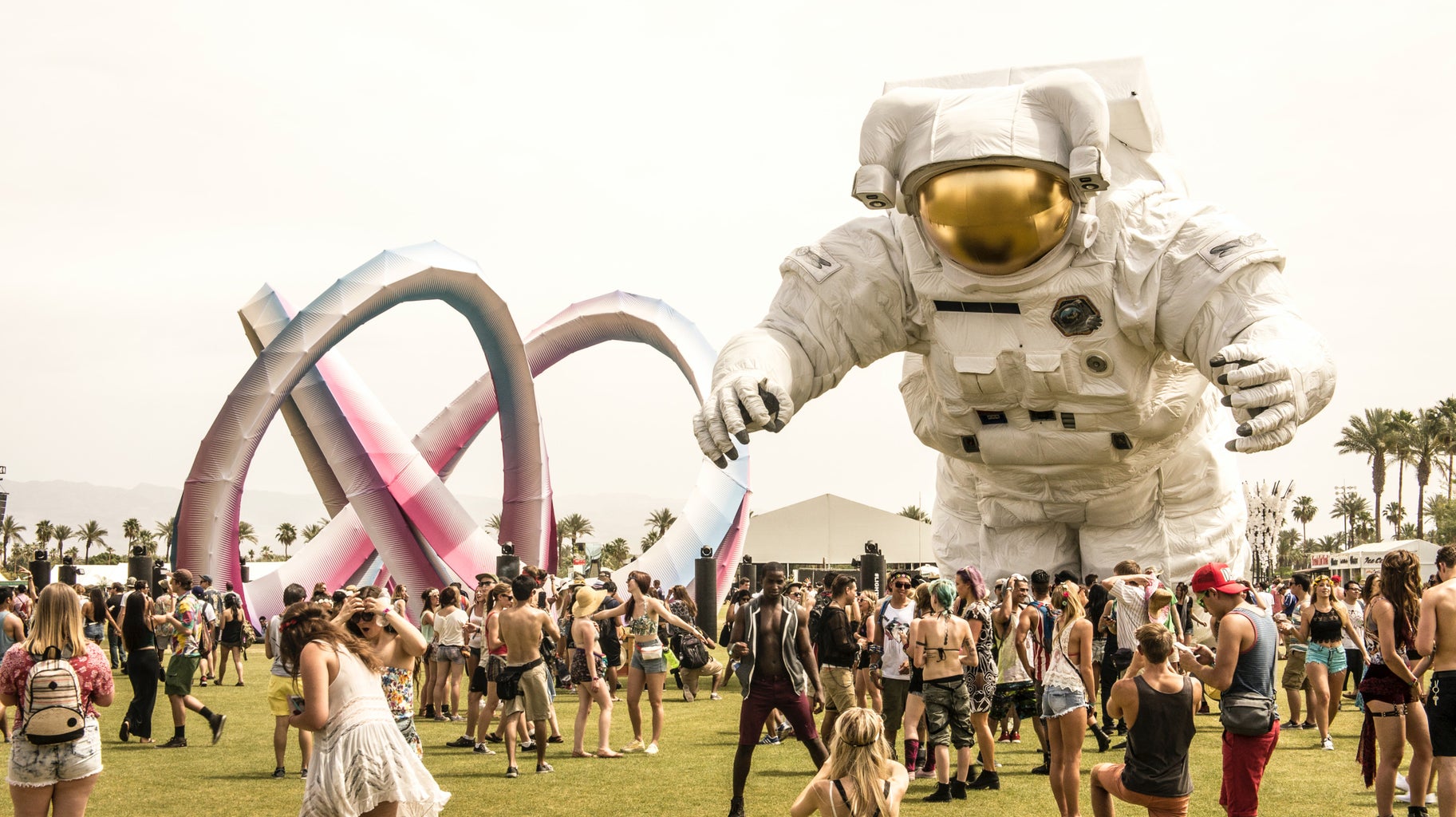As caravans of festival-goers crowd the Coachella Valley, before the grounds’ lush grasses are flattened to dirt by rhinestone-encrusted cowboy boots, social media waits with bated breath. The music festival, infamous for examining celebrity fashion and inhaling dust, is an annual event that invites influencers, celebrities, and fans to its 78 acres for music and revelry. Performers at Coachella range from legendary headliners who normally play sold-out solo tours to up-and-comers whose set you’ll wish you’d have seen in 3 years. Stagecoach, a country music festival with similar allure, follows the two-weekend festival.
But what sets Coachella apart from other music festivals is not its incredible performances. In fact, the music is often a forgotten artifact in the internet archives, background noise to the cultural moment that Coachella creates. The aesthetic, the tabloid drama, the stardom, and most importantly, the extensive documentation, create a breeding ground for scandal and infamy like none other. We all remember James Charles’ assless chaps in 2019 (but wish we didn’t), recognize Vanessa Hudgens as the queen of Coachella, and mimic Kendall Jenner’s voice when saying: “This was Coachella, 2016.”
Anyone who’s anyone is at Coachella, and anyone who’s no one wants to be at Coachella.
My first exposure to the festival was in 2018, and at the age of 13 I was gripped with intense FOMO as I watched my favorite Youtubers receive free pairs of shoes and purses, dance to artists whom I had never heard of, and dress in outfits I wanted to wear. They would crowd into luxurious houses, wear expensive clothes, and take pictures with professional photographers. I wanted to be there, but not because of the music. I was craving the influencer experience. And at the end of every Coachella 2018 vlog I watched, variations of the same segment appeared — a gushing, heartfelt thank you to “Dote.”
Launched in 2014, Dote was an online shopping service that marketed itself as an “online mall,” where users could shop from multiple online stores at once and check out with a single transaction. At one point, the app offered over 150 retailers, including brands like Brandy Melville and Urban Outfitters. Dote, as an idea, is brilliant. It was geared towards Gen-Z shoppers, and the company partnered with popular YouTubers at the time to bring teens into the world of digital commerce.
At Coachella 2018, Dote brought together the newest crop of It-girl YouTubers to the festival, including Emma Chamberlain, Ellie Thumann, and Hannah Meloche. One could call these three the most emblematic of the “Dote Girls,” a triumvirate of teenage girlhood manifesting as thin white girls with vlog cameras. Dote paid for these girls and countless other young, quirky, female vloggers to attend the festival, providing transportation, housing, and styling in exchange for content in the form of YouTube videos and Instagram posts. It was every teenage girl’s dream. Personally, I would’ve died to be there at the time.
We very often see brands bring influencers to different events, festivals, and red carpets. But Coachella 2024 saw a Dote-esque take on the influencer trip, with three brands (GUESS, poppi, and Tarte) hosting groups of influencers in the same house. The return to this heavily branded, collaborative Coachella content took me back to the days of Dotechella and I began to wonder — what happened to the multi-million dollar company that launched the careers of many a lifestyle vlogger in 2018? It turns out that the extravagant trips that led to their initial success would ultimately be their downfall.
After the inaugural Dotechella, Dote continued to bring primarily young, female vloggers with similar audiences on influencer trips. The trips were highly coveted, some YouTubers later revealed that the way to get onto these trips was to have a high follower count on Dote. The trips were vlogged to the point of exhaustion, the same moments replayed over and over on thirty different vlogs. But in a way, this is what made the trips and resulting content so popular — viewers were right there with the Dote girls, witnessing the trip from multiple points of view.
Dotechella 2019 was the beginning of the end for Dote. While Dote and attendees uploaded smiling group photos from the festival and filmed OOTD segments for their videos, one of the resulting vlogs told a different, much more complex story. On April 19, 2019, Black YouTuber and actress Daniella Taylor uploaded her Coachella vlog, titled “the truth about coachella ft. mental breakdown.”
Taylor’s vlog is fun and quirky in the beginning, but the mental breakdown promised in the title arrives, raw and vulnerable. Taylor films herself sitting on the floor of the Dote house, face sparkling with gems and tears as she expresses her discomfort on the trip so far. A “present” Taylor pops in to narrate and explain the thinking of her Coachella-self. She describes feeling awkward and different, and briefly mentions that her and about five other women of color were sequestered on one side of the Dote house, and the rest of the (primarily white) girls were on the other. Though not said in so many words, the implication was clear — the women of color were treated differently at Dotechella.
ItzKeisha, a Black British commentary YouTuber, published a video on April 28, 2019 inspired by Daniella’s vlog titled “Where is the DIVERSITY on YouTube?,” in which Keisha discusses the blatant lack of diversity on the Dote trips. She emphasizes the fact that while they bring women of color onto these trips, there are very few, and those who are there aren’t showcased on the brand’s social media to the same level as the white influencers. She also refers to Dote’s August 2018 Fiji trip, where she noticed cliques forming on the trip and how the three black creators on the trip were excluded from the content posted.
Keisha’s video generated more discussion about Dote’s diversity issues, and other women of color who had been on Dote trips began speaking out about their experiences, one being Vereena Sayed, whose video titled “Diversity on Youtube (there is none)” was posted on May 6, 2019. Sayed explained in further detail how the Dotechella house was effectively segregated, with women of color on one side of the house and the white women on the other. Sayed also discussed an incident on the Dote Fiji trip, where separate photoshoots were conducted for the white YouTubers and minority YouTubers. The issue was brought to attention by YouTuber Kianna Naomi in a since-deleted video. Viewers were rightfully outraged at the blatant disregard for women of color on these Dote trips.
Dote, steeped in controversy, launched a doomed diversity campaign titled “This is What Dote Looks Like,” where they posted outdated photos of influencers from all different backgrounds on their trips. The question remains simple: why didn’t Dote post these photos in the first place? Though Dote founder Lauren Farleigh apologized and assured that the Dotechella room groupings were not based on race, it was futile. Bit by bit, Dote’s most loyal creators stopped associating with the brand, removing discount codes from their Instagram bios and refusing to refer to the brand by name.
The brand attempted to recuperate with a rewards system, where users posted outfit pictures on Dote and were given coins for every purchase completed through the post. Dote coins covered entire purchase costs, and the model was a brief reprieve from business struggles, but not for long. Very abruptly, Dote coins began “expiring,” and soon after, users recieved messages that the app was no longer supported on iOS. Users who had hundreds of dollars in Dote coins lost the money they had earned via the app. And as fast as it rose onto our YouTube recommendations and Instagram feeds, Dote was gone.
Dote’s diversity issues are appalling, but not necessarily surprising considering the time and place in which this issue occurred. The Dote sector of YouTube was a predominantly white space and it shows in the commentary videos, in the lengthy disclaimers and refusal to put anyone on blast. Each of the Black and minority creators who spoke out showcased incredible bravery and risked their careers to bring this issue to light.
There is still so much work to do in terms of racism and colorism in the US and in online spaces. But it’s my hope that in re-examining these stories, we can foster a safer community for creators and influencers to speak freely, and be treated fairly.
No real explanation has come out about why Dote shut down. The internet has assumed it was a mix of the controversy and likely resulting financial struggles. The only thing that can be known for sure about the fall of Dote is that the power of the internet has never been stronger — the internet giveth, and the internet taketh away.




